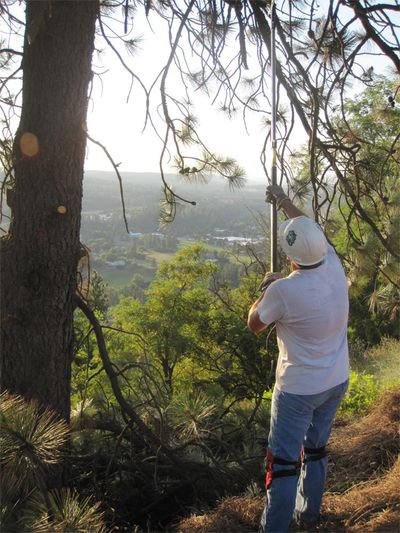Gardening: Pruning: Is this the right time?

The big question that seems to be on a lot of people’s minds right now is when to prune what. Here are some guidelines for doing that.
Trees and shrubs are just turning color as they begin their fall hibernation process. It will take about a month to six weeks for a plant to go completely dormant. During that time the plants translocate sugars from the leaves to the branches. Then the plants create a barrier between the leaf stem and the branch and the leaf detaches from the plant. The plant then moves the sugars into the roots for storage. A good frost – which we haven’t had yet – helps the process along.
Most things will be dormant by late November so you can do some light pruning starting then. However, it is better to leave the big heavy renovation prunings until late February into March. Even though the plants have gone dormant, there is still a chance we will get a very cold winter that could damage the cut branches. This is why tea roses are trimmed back about a third and then pruned again in early April. If you were to cut them back too far and too early, it could kill the plants.
Fruit trees should be pruned in late February and March before the buds begin to swell. If you intend to have them professionally done, get on the list early. Winter is the arborist’s busiest time of year.
Summer bearing raspberry and blackberry canes that fruited this year can be cut back now and the new canes tied up to the trellis. Long trailing blackberry canes can be gently wound in a circle and tied to the trellis to keep them in line. This keeps them in a compact space that will be easy to pick next summer.
Most perennials can be cut back once they die down. Leave ornamental grasses standing as they are just coming into their fall color after which they add winter interest to the garden. If you planted new perennials this year or scored some good deals at the fall nursery sales, cover these plantings with a layer of pine needles or trimmings from other plants to keep them from being pushed out of the ground by frost or pulled up by the deer. The plants haven’t had time to set out a strong root system that would keep them in the ground.
Peonies and oriental poppies need to be to be moved in the fall. Oriental poppies might be a bit hard to find because they went dormant in August so probe gently to find the root mass, dig it and plant it back at the same depth in the soil. Peonies need to be dug once their stems turn yellow. Gently work the plant out of the ground and then replant it so it is at the same depth in the soil. Peonies planted too deeply won’t bloom. Mark where you planted them and then mulch well.
Pat Munts has gardened in the Spokane Valley for over 40 years. She is co-author of “Northwest Gardener’s Handbook” with Susan Mulvihill. She can be reached at pat@ inlandnwgardening.com.